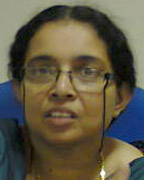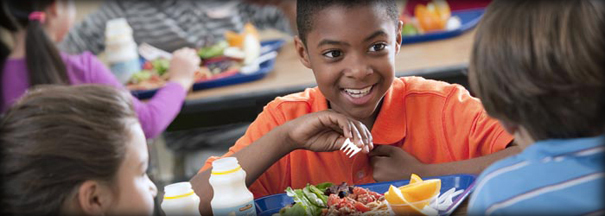Danger in the school canteen
Fatty, fried, salty and sweet… Junk food may be a hit
among school kids, but it is also making them unfit and in danger of
short circuiting their lives:
by Carol Aloysius
|

Dr Ayesha Lokubalasuriya |
School
canteens have come in for a lot of flak after recent random inspections
by public health officials revealed that the food in these places are a
far cry from the guidelines spelt out by the School Canteen Policy drawn
up by health officials. Random inspections by Public Health Inspectors (PHIs)
both within the city of Colombo and outside have found canteen owners in
some leading schools continuing to sell short-eats dripping with fat,
oil and containing excessive salt and sugar. The inspectors also found
that most students happily purchased these junk foods, while consigning
the wholesome meals prepared for them at home, to the bin.
Selling fast food such as hamburgers, potato chips, cakes, pastries,
chocolates, sweets and fizzy sugary drinks is high on the list of items
the health officials have repeatedly said ‘NO’ to. They have warned that
consumption of such foods on a regular basis could cause early diabetes,
hypertension, cardiac problems and other serious non communicable
diseases (NCDs) illnesses that could send children to an early grave.
So why do the canteen owners continue to sell these foods? Why do
school authorities permit their sale? Most importantly, why has the
Health Ministry been unable to take effective action against the sale of
these unhealthy food in school canteens, despite repeated reminders by
former Health Minister, President Maithripala Sirisena?
|

Consultant Community Physician in charge of School Health program,
Family Health Bureau, Dr Ayesha Lokubalasuriya explains.
Excerpts...
Q: The Schools Canteen Policy has been in existence for some
time. Could you tell us what it is? Is it an Act?
A: No. It's a circular drawn up by the Health Ministry and the
Education Ministry.
Q: What are its objectives?
A: To ensure that students who patronise school canteens
during school hours are served only health foods, and to limit the
students’ accessibility to unhealthy foods in and around the school as
well.
Q: Can it be enforced legally?
A. No. That is our problem. We are unable to implement it
because it has still to be submitted to the Cabinet to be presented in
Parliament.
Q: Does that mean canteen owners who violate it cannot be
penalised?
A: Yes. . They cannot be penalised by either the Health
Minister or the Education Minister.
Q: How have schools been informed about this Policy?
A: The Education Ministry sent out circulars to all school
authorities advising them that when they issue tenders to those wanting
to run these canteens, they should provide instructions on what food
they should provide and what they should not.
Q: So have they adhered to this request?
A: Only for beverages mostly. Not food.
Q: Can your inspectors close down a school canteen that serves
sub standard food?
A: Only if our inspectors have found evidence of sub standard
food after regularly visiting the school concerned. If the food is found
to have been expired, wrongly labelled or cooked in an unhealthy
environment, the owners can be taken to courts under the normal Food
Act.
Q: In general, what is wrong with the food served in school
canteens at present?
A: Much of the food is not nutritious and is mostly unsuitable
for growing bodies
Q: Are there exceptions?
A: Yes. The rural schools. Most of the schools which I have
personally visited in remote areas serve very healthy food for their
students. This is because their school population is small and their
canteens are not run as a business. Instead they get the community to be
involved, enlisting parents, teachers as well as volunteers. The fact
that much of the food served is usually home grown without insecticides
and pesticides, and consists of locally grown cereals and vegetables is
another plus point.
These schools don't serve any fizzy drinks either and usually give
their children a cup of milk tea instead.
Q: So that leaves us with the big schools. Why don’t the
canteens in these schools comply with the Canteen Policy?
A. Because in the bigger schools, which have much more
students, the canteens are run in a separate section of the school and
need canteen owners to run them.
The owners have to pay 50 cents per child per day, which goes into
their respective Schools Development Fund. To make up for this extra
expense, canteen owners serve instant foods like pastries and cakes,
which have a popular demand.
Q: What are the health impacts of consuming such foods on
children?
A. Several. Consumption of such foods on a regular basis could
cause early diabetes, hypertension, cardiac problems and other serious
non communicable diseases (NCDs) that could send children to an early
grave. A lot of these foods are deep fried using the same oil over and
over again. Recycling the same oil especially in the case of vegetable
oils, can result in more transfats and can expose children to the risk
of getting cancer later in life, as they contain carcinogen.
Q: Has your Unit attempted to discuss the matter with the
owners and asked them to change their menus to something healthier than
junk foods?
A: As I said, our emphasis is on locally grown cereals. We are
now in discussion with the canteen owners as to how they can serve
healthy foods in a more attractive manner by changing the menus and
varying them each day of the school week.
We are also discussing the matter with school principals while
raising awareness among them of the importance of ensuring wholesome
nutritious meals for their students.
Q: Do you have other issues with regard to the food they
serve?
A. Yes. The biggest problem we face is that there is no
regulation to identify healthy foods.
Although the Health Ministry is doing some work to help students to
identify food that is healthy and unhealthy food for them by using a
colour code, this is only for beverages so far. Not food.
Q: Please elaborate on the colour codes.
A: They indicate food with high calories, medium calories and
low calories. Those with high calories will be marked with red, medium
calories in yellow and low calories in green. It's just like the traffic
lights symbol. Even young children can identify them.
Q: You have often mentioned that non communicable diseases (NCDs)
are on the rise with children being vulnerable to getting them early in
life. Can their lifestyles, especially relating to food habits during
school hours, contribute to this trend?
A: In a study on School Health, which the Health Ministry did
with the World Health Organisation in 2008, it was found that over forty
percent of children came to school on an empty stomach missing their
morning meal. This was why we started the morning meal program. If
children don't get sufficient iron for example, their ability to
concentrate of their studies will be reduced.
They will develop anaemia. It will lead to malnutrition, delayed
menstruation, stunting and low weight babies when they become mothers.
Also, their school performance will decline.
Q: So is there something missing in their school curriculum
that can be filled to rectify this gap?
A: Actually yes. At present all these health issues I just
mentioned are being taught to them in the Reproductive Health and Life
Skills program. But priority is still given only to academic achievement
because our education system only evaluates their performance on their
academic achievements.
Rewards, like scholarships are given to academic achievers. But what
school authorities and even parents must reailse is that to get these
good grades, the key is good nutrition. Since students spend more than
six hours in school and have most of their main meals from school
canteens, it is important they get good nutritious meals served while in
school. If we can give all four million school going children a
nutritious meal in school instead of just one million as we now do that
would be ideal but very costly.
The other alternative is for parents to cook some healthy meals for
their children to take to school Home cooked food is a far better option
when it comes to healthy nutritious food for growing bodies.
Q: What is your final target?
A. We have to main targets: 1) to have school canteens serving
healthy food to students, and also limit the number of fast food
restaurants in the vicinity of these schools.
Our second and most important target is for every school to be a
Health Promoting School.
We are already on our way to achieving this goal. By 2017, we expect
at least 60 percent of such schools to be set up all over the island. |

